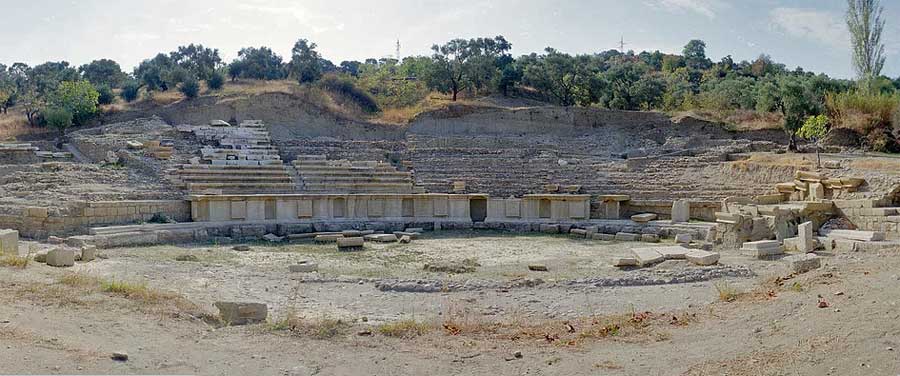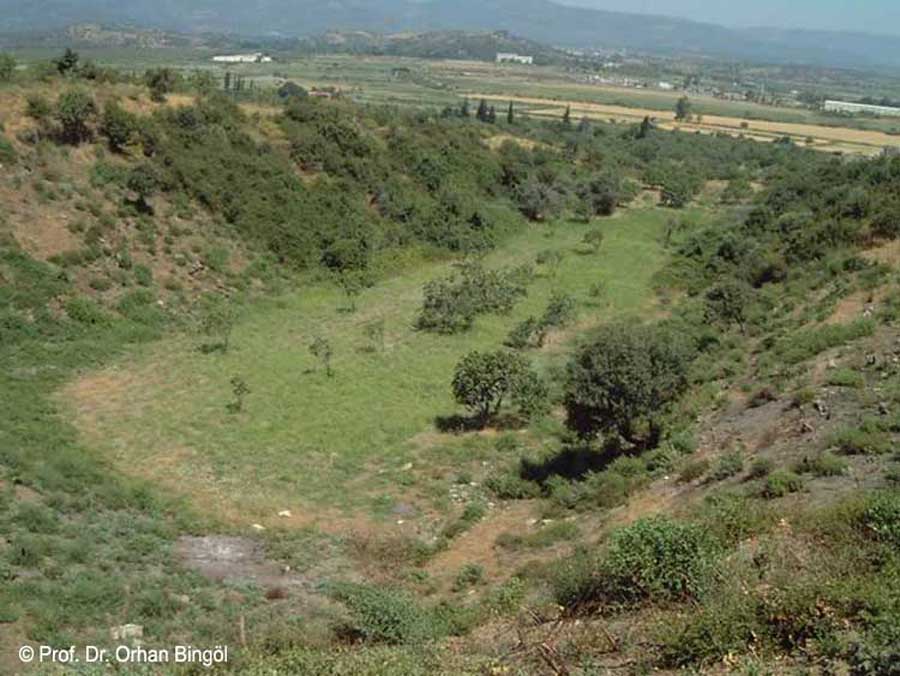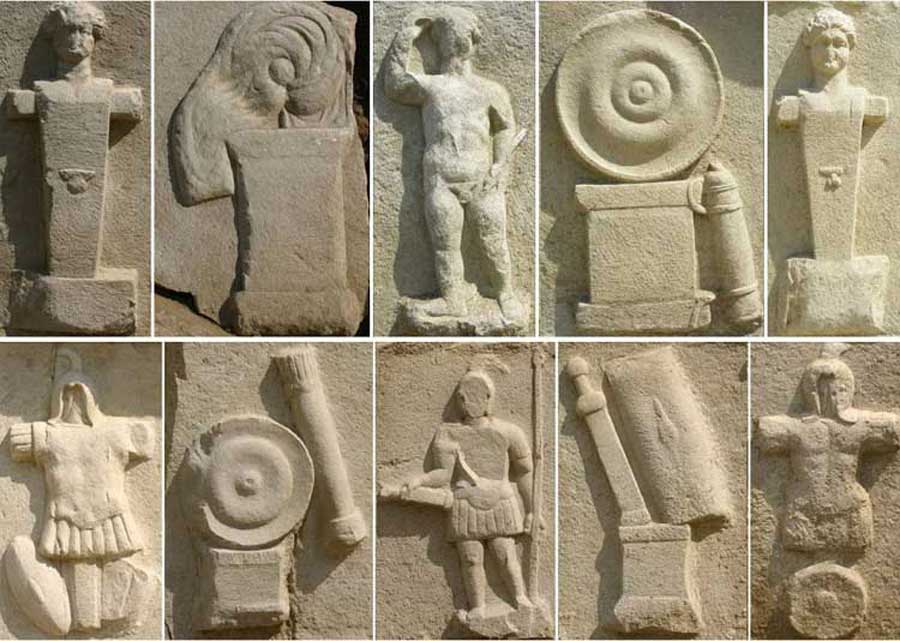 |
| Magnesia ad Maeandrum in Caria | |||
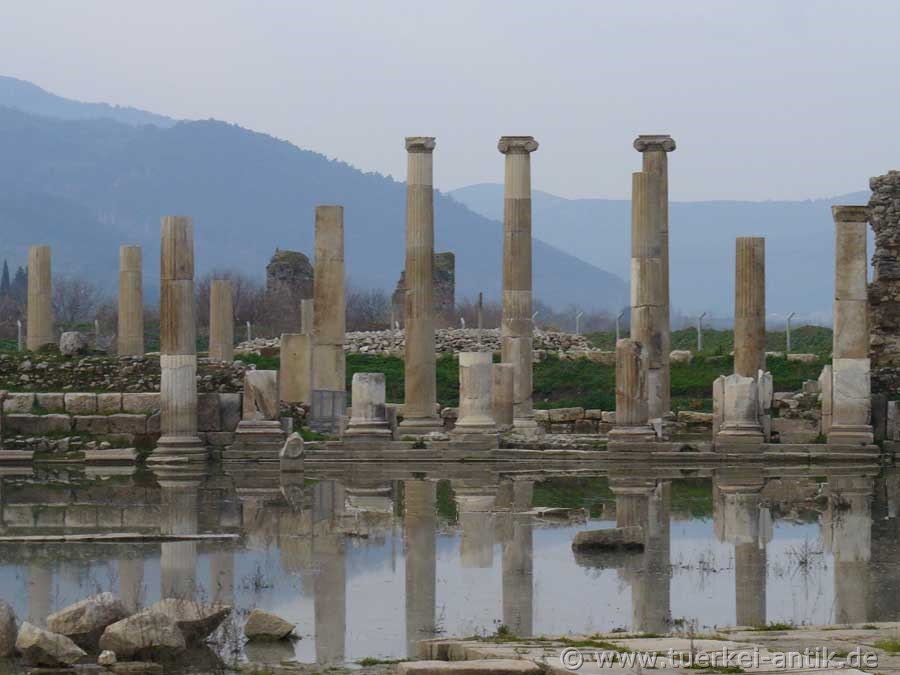 |
|
||
| The Lion Gate | |||
|
According to legend, the city of Magnesia was founded a generation before the Trojan War by the magnets from Thessaly. Through Alexander the Great Magnesia became Macedonian, fell to various Diadochi, became Seleukidic and experienced its cultural heyday with the Kingdom of Pergamum in the 2nd century B.C. Magnesia is mentioned in the works of Herodotus, Diodorus Siculus and Pausanias, among others. A war with Miletus ended in 196 BC with a peace agreement, after 190 BC the city was freed by the Romans. |
|||
|
|
|||
| The Gable of the Temple of Artemis Leukophryne | |||
|
Once stood a temple of Zeus Sosipolis and a temple of Artemis Leukophryne, with which the Greek architect Hermogenes created a new type of temple. This was the real reason to search and explore the forgotten city. In Berlin's Pergamonmuseum copies of an arch of the Artemis Temple and the pronaos of the Temple of Zeus (the latter contains two original pieces) have been reconstructed. |
|||
|
|
|||
| In the market basilica | |||
|
In 133 BC, magnesia was inherited by the Roman Empire. Destroyed by an earthquake in 17 AD, the city was rebuilt by the Roman Emperor Tiberius within twelve years with his own funds.
|
|||
|
|
|||
|
The Theatron © Prof. Dr. Orhan Bingöl |
|||
|
Magnesia was also rediscovered in the course of major excavation campaigns in Asia Minor by French, German and British scientists. In the years 1891-1893, excavations were carried out by the Berlin museums under the direction of Carl Humann, during which the remains of the Temple of Zeus and the Temple of Hermogenes were uncovered. After the completion of the first excavation campaign in 1893, the excavations were suspended until 1984.
|
|||
|
|
|||
|
|
|||
|
The existence of a stadium was known from ancient writings. Still in 1984 one could only guess that it could have been located in the horseshoe-shaped depression in the eastern part of the former urban area. Only the shape of the valley suggested a stadium. |
|||
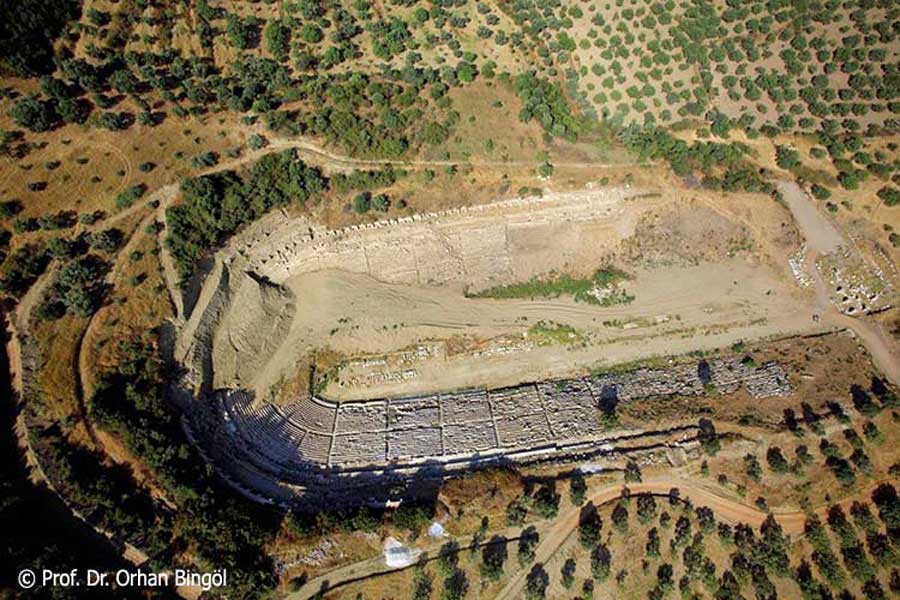 |
|||
|
|
|||
|
|
|||
|
|
|||
|
This is how the stadium currently looks like. One can see clearly how mighty the deposits of the last centuries were and still are. |
|||
|
|
|||
|
|
|||
|
© Prof. Dr. Orhan Bingöl |
|||
|
|
|||
|
The transition from the rows of seats to the ground of the arena was decorated in places with relief plates showing scenes of the competitions. Some of these reliefs have been preserved and can still be admired in their original form on site. It remains to be hoped that the rather primitive grids in front of these almost 2,000 year-old reliefs will prevent art thieves from stealing them. |
|||
| Photos: @chim, Prof. Dr. Orhan Bingöl | |||
| Translation aid: www.DeepL.com/Translator | |||
| Source: Wikipedia and others | |||
|
|
|||


